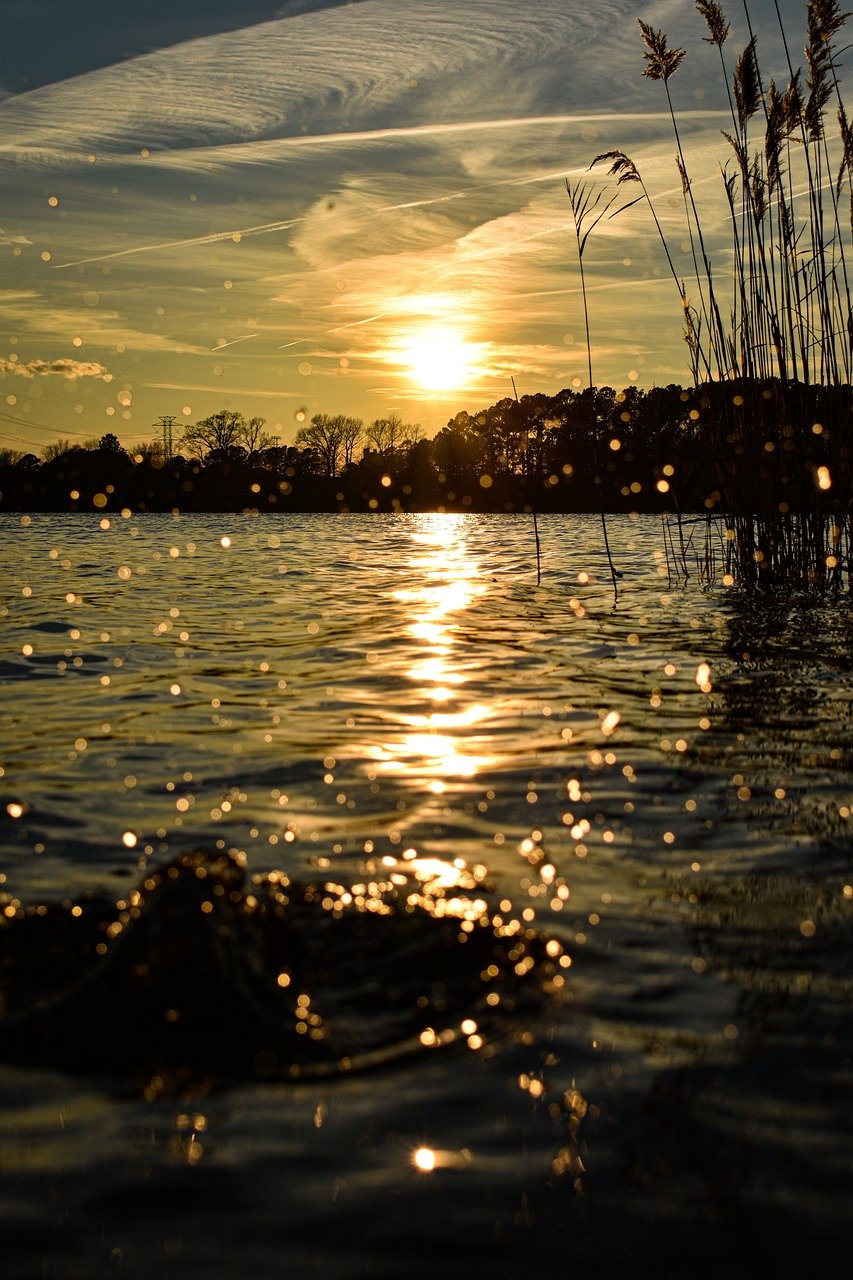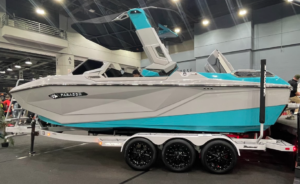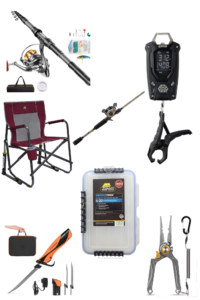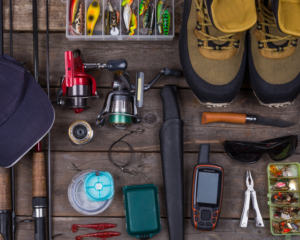Introduction
Fishing is a dynamic and exhilarating outdoor activity that connects individuals with nature while offering a sense of challenge and satisfaction. While the thrill of the catch is undoubtedly a major part of the experience, seasoned anglers understand that success on the water is heavily influenced by one key question: How will the weather affect fishing? In this comprehensive guide, we’ll explore the intricate relationship between weather and fishing, delving into the impact of various weather elements on fish behavior and offering practical tips on adapting to changing conditions.
Note: Along with the tips, I will link some of my personal favorite gear for specific weather conditions. Feel free to check them out for yourself!
Table of Contents: How Does Weather Affect Fishing
1. Temperature Matters
- Fish are cold-blooded creatures, meaning their body temperature is influenced by the environment. Consequently, water temperature plays a pivotal role in determining fish activity.
- Coldwater species like trout and salmon are more active in cooler temperatures, while warmwater species like bass and catfish prefer warmer waters.
- As a rule of thumb, many fish species become more active during the transitional seasons of spring and fall when water temperatures are moderate.
Example: Trout, for instance, tend to be more active in water temperatures ranging from 50 to 65 degrees Fahrenheit, while largemouth bass may show increased activity in waters above 60 degrees Fahrenheit.
2. Barometric Pressure’s Influence:
- Barometric pressure, the atmospheric pressure exerted on a given area, has a significant impact on fish behavior.
- Low-pressure systems, often associated with approaching storms, can trigger increased fish activity. Many anglers find that the period just before a storm can be particularly productive.
- High-pressure systems, on the other hand, can result in lethargic fish behavior, making them less likely to strike lures or baits.
Example: Fish may become more active when the barometric pressure is falling, signaling an approaching low-pressure system. High-pressure systems, where the pressure is rising, can make fish less active.

Weather Station Wireless Indoor Outdoor Thermometer
3. Wind’s Role in Stirring the Waters
- Wind can have both positive and negative effects on fishing. A gentle breeze can oxygenate the water and stimulate fish activity, especially in shallower areas.
- However, strong winds can create challenging conditions for anglers, making boat control difficult and impacting casting accuracy.
- Understanding how wind influences the water’s surface can help anglers locate fish. Wind-driven currents often concentrate baitfish, attracting larger predatory species.
Example: Wind speeds between 5 and 15 miles per hour may be ideal for creating ripples on the water, while higher wind speeds can make fishing more challenging.
Adapting to Changing Weather Conditions:
1. Utilizing Weather Apps and Forecasts
- In the age of technology, anglers have access to a plethora of weather apps and forecasts that can provide valuable insights into upcoming conditions.
- Paying attention to not only the current weather but also forecasts for the next few days can help anglers plan their outings more effectively.
- Apps that offer real-time radar and satellite imagery can aid in identifying weather patterns and making informed decisions on when and where to fish.
Example: Check weather apps for real-time temperature updates and barometric pressure readings specific to your fishing location.
2. Adjusting Techniques for Temperature Changes
- Understanding the preferred temperature ranges of the target species is crucial. During colder months, consider slowing down retrieval speeds and using baits that mimic more sluggish prey.
- In warmer conditions, when fish are more active, experiment with faster retrieves and topwater baits to trigger aggressive strikes.
- Depth can also play a role – during hot summer days, fish may seek cooler, deeper waters, while in cooler seasons, they might move to shallower areas.
Example: If targeting bass in the spring, when water temperatures are around 55°F, try using slow-moving jerkbaits. In the summer, when temperatures rise above 70°F, opt for faster-moving lures like crankbaits.
3. Fine-Tuning Strategies Based on Barometric Pressure
- Keep a log of your fishing trips and note the barometric pressure conditions when successful catches occur. Over time, patterns may emerge, allowing you to anticipate when fish are more likely to be active.
- On days with high pressure, consider focusing on slower presentations and more finesse techniques. When the pressure is low, experiment with more aggressive tactics.
Example: If fishing during a falling barometric pressure, try using soft plastics with slower presentations. During rising pressure, consider using faster-moving lures like spinnerbaits.
4. Mastering Windy Conditions
- Wind can be both a friend and a foe for anglers. When faced with windy conditions, it’s essential to adapt your techniques accordingly.
- In windy conditions, fish may be pushed to the windward side of a water body. Focus on casting into the wind to cover more water effectively.
- Using heavier lures or adjusting your casting angle can help combat the impact of the wind on your presentation.
Example: If fishing on a windy day, use heavier jigs to maintain better control over your presentation, and cast against the wind to cover more ground.
5. Safety First
- While adapting to changing weather conditions is crucial for successful fishing, safety should always be a top priority.
- Keep an eye on weather updates and be prepared to cut your trip short if severe weather is approaching.
- Ensure you have the necessary safety gear, including life jackets, a first aid kit, and communication devices, especially if you’re fishing in remote or unfamiliar areas.
Example: If thunderstorms are forecasted, prioritize safety and head back to shore well before the storm arrives. Always have a reliable means of communication, such as a waterproof VHF radio.

Cobra MR HH350 FLT Handheld Floating VHF Radio
6. Being Flexible with Locations
- Changing weather conditions can influence fish movement and feeding patterns, making it essential to be flexible with your chosen fishing locations.
- Explore different areas of a water body based on the prevailing conditions. During high winds, sheltered coves and bays may provide calmer waters and more active fish.
Example: If the wind is making open water fishing challenging, seek sheltered areas like coves, points, or areas protected by natural barriers.
7. Experimenting with Bait Selection
- Matching the hatch – selecting bait that closely resembles the local forage – is a fundamental principle in successful fishing.
- Changing weather conditions can impact the availability and behavior of prey species. Be prepared to experiment with various bait types, sizes, and colors to find what works best on a given day.
Example: If fishing after a cold front, try using smaller, more natural-colored baits as fish may be more cautious. In warmer conditions, opt for larger, more vibrant baits.
8. Observation and Patience
- Successful anglers are keen observers of their surroundings. Pay attention to subtle changes in fish behavior, water clarity, and the presence of baitfish.
- Exercise patience, especially during challenging weather conditions. Fish may be more selective, requiring a more strategic and persistent approach.
Example: If you notice fish feeding near the surface during overcast conditions, be patient and continue using topwater lures to capitalize on their feeding behavior.
Conclusion
In the dynamic world of fishing, knowing how the weather will affect fishing, is not just a skill; it’s a necessity. The intricate interplay between temperature, barometric pressure, wind, and other weather elements creates a tapestry that anglers must decipher to unlock the secrets of successful fishing. By understanding these relationships and employing adaptive strategies, anglers can enhance their chances of a fruitful day on the water, regardless of the ever-changing conditions nature may present. So, next time you hit the water, remember to keep an eye on the sky, feel the wind on your face, and be ready to adapt – for that’s the essence of mastering the impact of weather on fishing.
Spring is right around the corner. If you need some tips and tricks for spring bass fishing, please check out our previous article to help you out:



